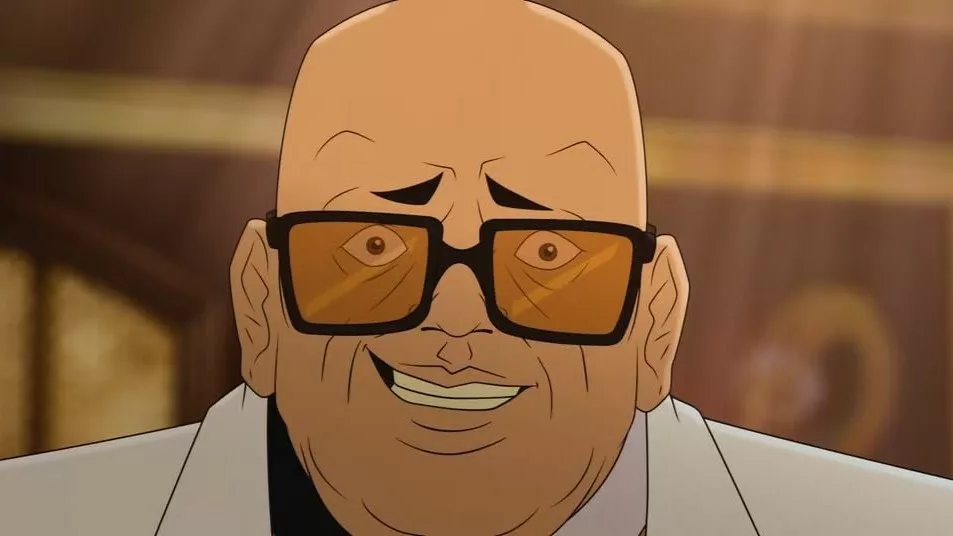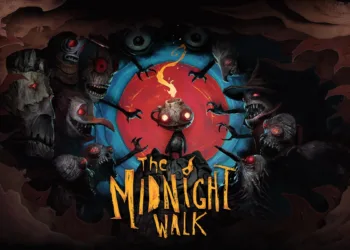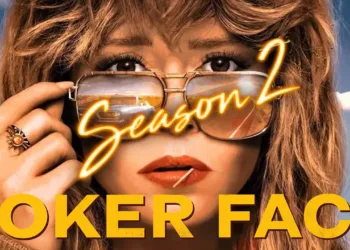Hit-Monkey continues to walk the vigilante path less traveled. While other heroes trade banter in slick suits, this show honors the violent grit pioneered by films like Oldboy and martial arts classics like Drunken Master. Dark humor cuts through the carnage, recalling Tarantino at his pitch-black best.
Season 2 delves deeper into what fuels a life of violence. Monkey confronts his own “family business” legacy through a crisis of conscience glimpsed in similarly nihilistic animation like Primal. Bryce’s redemption arc nods to fallen antiheroes from The Dark Knight to Breaking Bad. New characters like Eunice bring levity, further separating this show from the gleaming MCU while expanding representation in the genre.
Through intricately animated mayhem and nuanced character journeys, Hit-Monkey remains that rare comic adaptation unafraid to color outside the lines. While some question its direction, true aficionados see how honorably it carries the torch of transgression lit by mangas like Lone Wolf and Cub yet speaks to the social realities of our turbulent present. This season proves this show is still very much a hit.
Marvel Evolution: How Hit-Monkey Destroys and Rebuilds Familiar Formulas
Beyond its deliriously gory action set pieces and pop culture deep cuts, what truly sets Hit-Monkey apart is its nuanced character work. Bryce’s arc underscores how the genre’s tropes can confine even its most charismatic rogues. His jokey façade cracks to reveal lingering trauma—an evolution anyone who came of age on Miller’s Daredevil can appreciate.
Meanwhile, Monkey’s internal struggle transcends simplistic notions of heroes and villains. By stripping away words, the show highlights how our humanity lies not in ability but in intent. In lesser hands, this focus on psychology over power fantasy could feel like navel-gazing. But by weaving introspection into its trademark absurdity, Hit-Monkey proves philosophical heft need not sacrifice fun.
The newcomers also enlighten familiar formulas. Eunice subverts the expectations of marginalized “sidekicks” to emerge as a fully realized star. Akiko demands we retire outdated villain tropes, redeeming even the most unsavory of acts through empathy over accusation.
Most striking is how seamlessly Hit-Monkey melds biting satire with genuine heart. Its wild high concept takes on profane realism only to ground us in characters whose dignity transcends their circumstances. By the journey’s end, even casual fans will feel invested in calming Monkey’s demons, as though part of his family.
In recontextualizing the line between “heroes and heels,” Hit-Monkey reminds us why these stories endure: not simply to emulate but to understand each other. By season’s end, it erects a paradigm that could revitalize superhero fare for generations to come.
How the Animated Series Evolves the Superhero Story
The heart of any great story lies in its characters, and Hit-Monkey season two does not disappoint in fleshing out its ensemble. Monkey remains the stoic bruiser at the center of it all, his silent performances speaking volumes through subtle nuances. Like Clint Eastwood roaming the spaghetti western landscape, there’s a noble sadness to our hero that invites contemplation between acts of brutal efficiency.
Bryce, the ghost with the most, slides neatly into the Deadpool role as a motormouth merc. But Sudeikis injects surprising dramatic chops, tapping into the wounded soul beneath flash and bravado. His goal of reconstructing relationships shows growth from the season one riff on prototypical “man with a past” origins that laid similar groundwork for the likes of Wolverine.
Returning players Akiko and Haruka take strides forward as well. Munn’s Lady Bullseye channels the unhinged glee of Harley Quinn while bringing deeper shading to Akiko’s trauma. Maki finds Haruka tested on an inner journey akin to heroes in Hero’s Journey epics, like Neo unlocking her true potential.
New additions also delight. Leslie Jones’ big-hearted Handler owns every scene. Like Margot Kidder’s Lois Lane, her pluck and loyalty are the perfect complement to the leads’ eccentricities. Side characters likewise jump off the page with distinct ticks and traits that give the world texture, just as the X-Men’s extensive rogues gallery did for their universe.
Throughout it all, precise vocal performances bring these displaced souls to three-dimensional life. Animation allows showing what words cannot; the nuanced expression Hit-Monkey masters with every head tilt, brow furrow, and sigh. With its characters, Hit-Monkey proves itself a creative evolution of the superhero genre and its enduring themes of finding family, redemption, and living up to one’s full, complicated self.
Hit Monkey’s Hybrid Heritage
From its very inception, Hit-Monkey staked its claim as an agent of chaos, breaking barriers and blurring boundaries across both page and screen. Like the crude cruisers of Grindhouse Cinema or the hyperviolent hijinks of Johnny Knoxville’s Bad Grandpa, the series pries open the door between genres just wide enough to shock civilian sensibilities while appeasing our pulp proclivities.
Season 2 expands Hit-Monkey’s animation arsenal, letting blood spatter with balletic beauty across unfettered frames. Recalling Sam Raimi’s splatter-panache or the anime action of Ninja Scroll, fight sequences showcase fluidity within fatality. Limb separations and eviscerations occur with operatic grandeur, each impact pulsating to a pounding prog-metal score. Creative kills pay homage to Mexico’s luchador roots as combatants channel wrestling’s drama through spectacular special moves.
If Season 1’s animation invited comparisons to Archer, Season 2 distinguishes itself through embellished environments and expressionistic character designs. Backdrops burst with the vibrant verve of a comic book splash page come to life, while emotive exaggeration gives performance precedence over realistic rendition. Like an Acme anvil careening towards the Coyote, the series swings between screwball slapstick and gut-wrenching gravitas with a tonal agility rivaled only by early Disney.
While pushing envelopes, Season 2 never grows gratuitous or loses sight of the story. Graphic gangland greetings climax within climactic story beats, viscera acting as exclamation rather than empty excess. Through deft dynamics between the diametric duo of Monkey and Bryce, Hit-Monkey honors its heroic origins even as it hurtles headlong into new creative caverns. Two seasons in, the series has surely earned membership in pulp’s most elite estates.
Monkey See, Monkey Cuo: Hit-Monkey Gets Deeper Into the Lore
Those familiar with the four-color exploits of our simian samurai know Hit-Monkey’s story has always subverted caped-crusader conventions. Where others play by the hero’s handbook, Japan’s favorite ex-executioner has cut his own red-stained path. Season two continues to deepen the depth of Hit-Monkey’s world while widening the scope of his soul-searching mission.
Gone are the standalone episodes of season one. An overarching meta-plot involving ancient rival clans and their mystic macguffins gives monkeys’s actions heavier consequences. Writers Speck and Gordon pace revelations perfectly, peeling back layers in a way sure to have forum fires blazing. Each dropped hint and revealed relationship transforms what came before, honoring the well-worn tradition of long-form storytelling.
Core cast growth likewise enriches the whole. Hit-Monkey’s torment over losing his way shows a new side to the silent simian. Haruka blossoms into a heroine forging her own destiny, flipping the page on tired tropes. And Bryce’s bittersweet bond with long-lost daughter Iris brings the heart this critic has begged for since issue one.
Even antagonists get an upgrade. Where once we knew enemies only by their nefarious acts, season two explores what drove them to darkness. Revenge isn’t simply served cold; it is born from buried pains, as we all understand. It’s evolving; make sure to have the Con crowd nod in approval.
Through peerless pacing and deepened development, Hit-Monkey’s second salvo proves this is no flash-in-the-pan affair but a saga for the ages. The monkey may remain mute, but his story’s message rings ever louder: in a world of caped comics, real character is what makes a tale truly timeless.
Monkey Business: Hit-Monkey Delivers Its Wildest Ride Yet
When it comes to genre mash-ups, few dare go as fearlessly off-the-wall as Marvel’s Hit-Monkey. Since its debut, the animated series has gleefully plummeted headlong down the rabbit hole, fusing brutal action, biting black comedy, and heartfelt emotional depth into a deliriously genre-defying whole.
Season 2 doubles down on this anarchic spirit. Under new showrunner Kevin Mellon, previously known for cult favorite Archer, the mayhem is kicked into high gear. Fights spiral to psychotropic extremes, with mystic blades and psychic powers unleashing colorful chaos that would make Ash Williams whistle in admiration. Meanwhile, the rapid-fire dialog remains blisteringly sharp, hitting that sweet spot between Deadpool’s gleeful, gross-out humor and Archer’s acerbic popping of political bubbles.
Yet for all its love of pushing buttons, Hit-Monkey never loses sight of its soul. At its heart lies the bond between assassin primate Monkey and his ghostly partner Bryce, whose desire to reconnect with estranged daughter Iris imbues proceedings with surprising pathos.
In lesser hands, these more sentimental plates could never balance atop the circus carnage without crashing to the floor. But thanks to nuanced performances from Sudeikis and Tatasciore, the emotional grit holds fast, no matter how high the stakes or silly the scenarios get.
Season 2 proves Mellon is the secret sauce. Hit-Monkey needed to truly synthesize its ingredients into genre greatness. While never shying from pushing extremes, he ensures each sequence’s comedic timing and dramatic payoffs land with pinpoint precision. The ultimate result is Hit-Monkey’s most perfectly calibrated balance of belly laughs, gasps, and emotional gut-punches yet, proving with passion, peril, and primates that anything is possible. Fans won’t just be howling for more; they’ll be demanding it.
Hit-Monkey Hones Its Hardboiled Heart
Hit-Monkey has fully embraced its pulpy noir roots in this sophomore season. Where season one dabbled in basic hard-boiled tropes like the jaded merc with a heart of gold and femme fatales, season two plunges headlong into the genre’s murkiest waters.
We see Bryce wrestling with the darkness within his own soul, desperate to atone before his time runs out. With evocative scenes of his Hellish torment, the show understands that damnation isn’t just a comedic prop; it’s an emotional state we’ve all glimpsed in our lowest moments. Bryce’s climactic confrontation with Lady Bullseye upends expectations for revenge narratives, opting for something far messier and more real. Their brawl plays like a Fight Club midnight screening, eliciting gasps and cheers in equal measure.
Of course, no self-respecting private eye tale would be complete without a mysterious dame stirring trouble. Enter Haruka, whose transformation into a femme fatale with psychokinetic powers nods to Twin Peaks while crafting her own path. Her shadowy involvement with the Assassins’ Co-op deepens the conspiracy at the core of Hit-Monkey’s sordid underworld.
But it’s Monkey who feels the season’s emotional beats most purely. His internal struggle to escape this life of violence for perhaps a simpler path pulls from classics like Taxi Driver. Tatasciore brings such nuance to every primal scream and whimper that we can’t help but see our own flaws reflected in our furry friend. His climactic reckonings had this critic reaching for the tissues.
This sophomore outing proves Hit-Monkey has so much left to offer fans, both lapsed and newcomers just discovering its unique vision. With its reinventions of genre tropes and focus on emotional depth over empty thrills, it’s primed to join the pantheon of neo-noirs that will persist for generations to come.
Hit-Monkey Season 2 Pushes Animation Boundaries
Much like the Merc with the Mouth pushed the Comics Code Authority to its limits, Hit-Monkey continues to color outside the lines of traditional animation. While season one surprised audiences with its balance of over-the-top violence and quirky heart, season two show creators Will Speck and Josh Gordon have only begun to flex their creative muscles.
Monkey and Bryce’s move to New York opens new storytelling doors just as it closes old wounds from Tokyo. Like Roger Rabbit showing us Toontown’s seedier side, we see Big Apple underbelly dive bars and crime rings that would make Daredevil blush. Yet Bryce’s desire to reconnect with daughter Iris gives their antics layers rarely seen in shows like Archer. The dynamic shifts allow lesser-known heroes like Haruka and newcomer Eunice to shine in ways the X-Men wish they could.
All the while, deceptive villains lurk straight from the pages of Immortal Hulk. Their manipulation of mystical macguffins mixes genre DNA in ways sure to have Ash scratching his head. But it’s Monkey’s journey of self-reflection that anchors the season as he questions his thirst for vengeance. His internal struggle will resonate with any Wick who once longed to walk away from life.
While season one hinted at Hit-Monkey’s potential, season two proves these characters are only getting started. Fans will be on the edge of their seats, theorizing where season three could take the series. For now, put season two on repeat, like The Mandalorian, and toast to the animation movement these anarchic apes help lead.
The Review
Marvel's Hit-Monkey Season 2
Hit-Monkey raises the bar for animated antiheroes, balancing irreverent action with emotional insight. Season two builds on its predecessor's foundations with enhanced characters, worldbuilding, and subversive storytelling that keeps viewers guessing. While not without flaws, this is a series that will have genre fans hungry for more monkey business. The show delivers top-tier voice acting and animation quality that immerse viewers in its unusual world. Some unevenness in the season 2 plot and threats lessen the overall experience, but Hit-Monkey remains an enjoyable ride for those seeking animation that isn't afraid to color outside the lines. Fans of subversive storytelling and eccentric characters will find much to enjoy.
PROS
- Strong voice acting from the lead cast, such as Jason Sudeikis and Leslie Jones
- Vibrant animation style and creative fight sequences
- A subversive tone brings a fresh perspective to the superhero genre.
- Season 2 expands the compelling character dynamics.
- Tackles complex themes of morality and redemption for heroes
CONS
- Uneven plot pacing and character arcs in some episodes
- Overly absurdist humor and violence won't appeal to all tastes.
- Relies heavily on familiar pop culture references
- Lingering questions from Season 1 are not entirely resolved.






















































